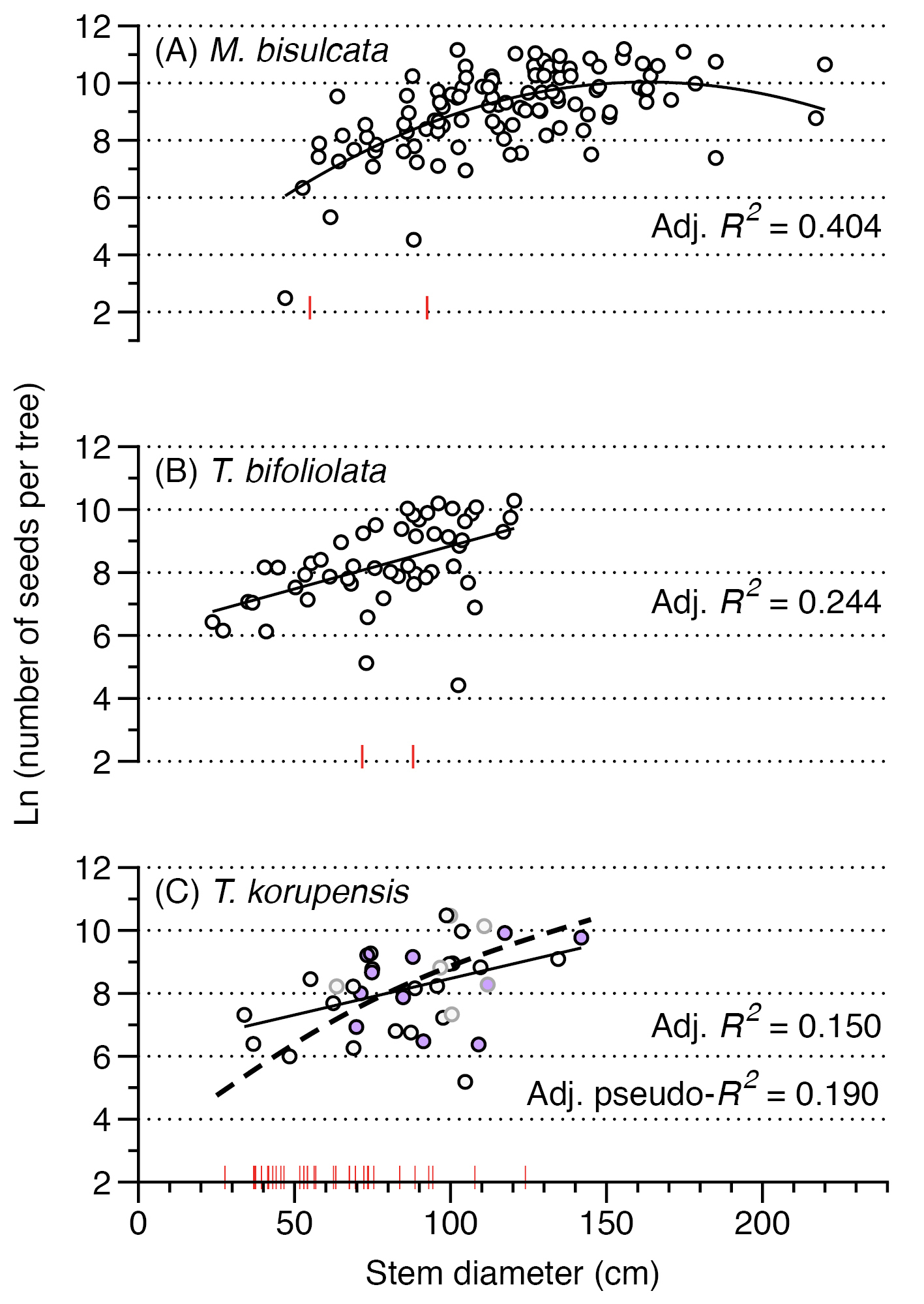
|
||
|
Scatterplots of individual reproductive output (seeds) as a function of stem diameter for three canopy-dominant masting species—Microberlinia bisulcata, Tetraberlinia bifoliolata, and T. korupensis—in Korup National Park, Cameroon. Red vertical tick marks along the x-axis indicate the size of non-fruiting trees (zero seeds or pods produced) in each population. In (C), the light-grey circles are six trees whose stem diameter was interpolated from their crown areas (Supplementary material 4); purple-filled circles are those trees confirmed as attacked by the Achaea caterpillar. Another three scored as attacked did not set fruit (red ticks; DBHs: 67.5, 73.7, and 124.0 cm). The dashed curved line is the fitted ZiG (zero-inflated gamma) regression to the 69 T. korupensis trees (i.e. fruiters plus non-fruiters; Table 1). Because the scatterplots for pods closely resembled these for seeds, they are not shown for brevity. Samples sizes for fruiting trees only are (A) N = 112, (B) N = 52, and (C) N = 37. |